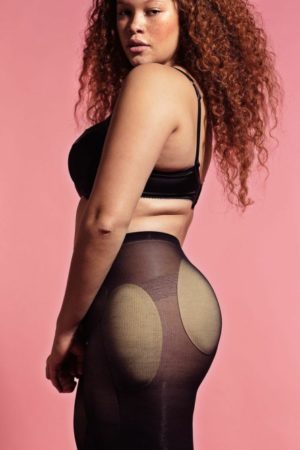Source: Refinery29
The plus size fashion industry has been growing drastically over the past few years. In 2014, sales in plus size fashion grew by 7%, generating USD$17.6 billion into the industry. With e-commerce being the biggest platform for consumers to access clothing that is not so readily available in stores, the market has started to come to terms with catering to all sizes when it comes to high street fashion and trends.
So you can imagine my surprise when I was trawling through Snapchat last night to find an article by Refinery29 showcasing “plus size” models and their use of padding to meet the size requirements of designers. You read that correctly, these models are being shaped to the perfect streamline figure, with curves in all the right places, all through the process of stuffing foam into their shapewear.
“The plus size industry actually starts at a US size 8 and goes up to a US size 16” model Ashley Graham spoke about in her Tedx talk in 2015, meaning on average, the majority of us (the average Australian female being a size 14) are considered to be plus size in the fashion industry. Writer Ben Reininga, who originally published the article in 2015, interviewed six plus size models about their experiences and thoughts on the process of padding for modelling jobs. Many of these women are two, three or four sizes smaller than the size required for the sample garments, however, they are hired on the basis that they can be filled out in all the right places, creating a streamline silhouette that is unattainable to the majority of the general public.
With slim waists, long limbs, thin faces and curves on their hips and butts, models perceived as having silhouettes similar to Jessica Rabbit and Marilyn Monroe are by no means the reality of what is a natural plus size girl. What’s worse is that their consumers are desperate to achieve these figures with little knowledge of the behind the scenes deceptions that help them achieve this look on set. From what I’ve read, it’s apparently no secret that brands have been casting what are known as straight sized models and padding them for plus size campaigns. Maybe I’m naïve in thinking that we were finally at a point of liberating all shapes and sizes? I knew of shapewear, Trinny and Susannah taught me that, but padding? Really?
From an economic standpoint, a fashion brand cuts costs by having one model wear up to 80 garments in a photo shoot, all of which vary in size due to designer sample sizes not keeping to a sizing standard. Eliminating the cost and presence of a seamstress to alter the clothing to fit the model means that padding is a quick and cheaper alternative to mould the model into the desired shape of the garment to give the illusion of curves in all the right places. Many models carry to their photoshoots a bag of padding options, including hip, thigh and booty padding, as well as chicken fillets for the bust.
Model Sabina Karlsson, a size 12, says she uses padding in at least half her shoots to achieve the fit of a size 14 or 16 model. “When I was straight-sized, I wasn’t skinny enough, and now I’m plus-sized, and I’m not curvy enough. It would be nice to be like: I’m this model, and this is me”.
Sabina Karlsson
Source: Refinery29
From a psyche perspective, when the clothes are then translated into everyday consumer lives, it’s hard not to point the blame on ourselves when they don’t look as good on us as they do in the look book. “It’s the clothes that don’t fit my body. Yet I walk away feeling like my body doesn’t fit into the clothes” blogger Emily McCombs from xoJane. And she’s right, we sit there and think “why me?” when in fact these clothes are pinned, bulldog clipped and padded to perfection.
By changing the appearance of these models through padding, is the industry just as guilty for following the attitude of smaller is better on the plus size end of the spectrum as it is in the fashion modelling, size zero industry?
“Padding shows that advertisers don’t really believe a woman who really is size 14 or above can sell clothing. When I first started modelling, they told us that women want to see really skinny women sell regular-sized clothing. So, they see a size 0-2 and they’re a 6 or an 8, and that’s aspirational” says plus size model, Elizabeth Taylor. “By that same logic, a woman who’s a 14 or a 16 would want to see a size 8 modelling her clothes. It’s the same aspirational (or deceptive) fashion industry practice, just geared towards a larger woman”.
So whilst the plus size industry has attempted to liberate us with models that look like us every day girls, it’s hard not to be angry at the thought that they’ve been conning us the whole time. Consumers have viewed these models as close to perfectly proportioned – well mostly, assuming that there could be some photo-shopping, we’re not that naïve!
What’s next, they’re going to tell me that Kim Kardashian’s body isn’t natural too? Surely not 😛
If you’re struggling with body image issues, contact BodyMatters.


